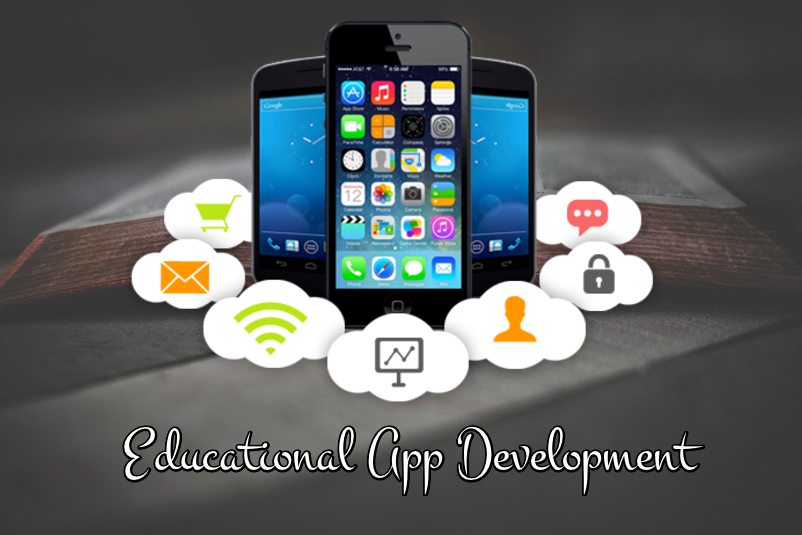24 Jan

|
Getting your Trinity Audio player ready...
|
App development has become a holy grail for almost all organizations, but the dilemma about choosing the right platform remains. Selecting a platform has become difficult because the lines between different methods are becoming blurred. Organizations are resorting to app development because customers are more interested in using apps to get things done, rather than browse through multiple website pages.
Apps nowadays are working as a competitive advantage for many companies. The Google Play Store currently nests about 2.47 million apps, while Apple App Stores hosts 1.8 million apps, as of 2019. Android and iOS are the used smartphone operating systems, and millions of people use native apps built on these platforms every day.
Table of Contents
So, What Are Native Apps?
Native app development is building mobile apps for a specific platform that users can access from their respective app stores. If a company intends to build iOS apps, then coding language app developers use would be Swift or Objective C. However, if the apps are built on Android, then Kotlin and Java language will be used.
Google and Apple have their own interface elements, SDKs, and development tools, which are offered to mobile app developers. Native app development provides multiple benefits to developers as well as organizations. Having mobile software has become a necessity for organizations. Developers and organizations must be well aware of the benefits and drawbacks of different app development approaches.
Let us look at the benefits of building a native app:
1. Native Apps Provides Optimal Performance to Users
Apps built for a particular operating system and created by the native mobile app development approach offers exceptional user experience. It is because the app provides the user with a high level and adept operational efficacy. As native apps are built for a single platform at a time, a lot of focus and thought goes into it. The developers look at every nook and cranny to deliver a bug-free app to the user with a high emphasis on ease of usability.
Additionally, as the native apps are created by using platform relevant coding languages and special APIs, they perform more efficiently and smoothly. The processing speed of smartphone devices is used to its highest degree as the content of apps is stored in the device while the users navigate in the apps. It is one common reason why native apps tend to have quick load times.
2. Native Apps Offers Better UX and UI
Native apps provide an outstanding and smooth experience to its users, especially when it comes to user input and output. The apps give off a sense of integration as it inherits the interface of the smartphones’ operating system. The native apps offer its users a grander user experience, which is the topmost benefit of native app development.
For instance, if a native app is built for an android device, it will offer an aligned and improved user experience as it integrates itself with the guidelines and functions of the operating system. It is beneficial as every app has a standard UI benchmark. Native apps naturally adopt the UI benchmark to provide user-friendly results. When specific procedures are followed, it enables the users to interact with the apps using the swipes and gestures they are familiar with already.
3. Native Apps Gives Developers Complete Access to Device Features
Native apps take complete advantage of the features of the operating system and software of the platform for which they are developed. Native apps are capable of directly accessing the devices’ hardware, for instance, camera, speaker, microphone, GPS, fingerprint sensor and more. It ultimately results in faster execution and enhanced user experience. Another benefit of native app development is to push notifications.
4. Native App Development Have Fewer Development Bugs
Maintaining two apps in different coding platforms is easier in comparison to maintaining two apps in one code. There are fewer chances of encountering a bug in native app development. Developers of organizations specifically offering applications development services are more leaned towards native app development; fewer bug problems are the reason why.
5. Native Apps Maintain and Adjust to Different Aspect Ratios
The height and width of devices are known as their aspect ratios. The aspect ratio is essential in determining the image quality displayed. Numerous apps tend to crash and lose functionality if the aspect ratio is changed. Apps developed with native app development approaches have better control over the resolution, size, and orientation of the native app.
App developers have layout features access when developing native apps. During development, when developers set the screen size, the native apps efficiently manage the aspect ratio on its own, regardless of which device it is launched on. As a base layout, developers use Constraint Layout for android and Auto Layout for iOS apps. The layout features assist the native apps in sustaining the aspect ratios on different devices. Additionally, these features offer different dots per inch (DPI) for every screen, which maintains the visual quality.
6. Native Apps are Easily Scalable
Native apps are easier to configure, as they are compatible with one platform at a time. If native apps are built for two different platforms, then they will be coded on different coding languages and treated as separate projects. It liberates the developers from worrying about app dependencies between different platforms, making it easier to scale the apps. Developers state that it is a cinch to scale native apps due to fewer restrictions.
Are Native Apps Worth the Hype?
It is a known fact that native app development, whether Android or iOS is costly and time-consuming, but only during the first stage. Then again, building native apps can save a good deal of money and time in the future. Native apps offer excellent user experience, exceptional performance and leverage on-device features making apps user-friendly and rewarding in the long-term. The blend of these features of native apps would provide higher conversion rates. With increasing mobile apps demand, companies resort to native apps development for delivering better user experience.
Author Bio:
Olivia Marie is a digital marketing expert at Cubix, who loves to write content on the latest topics, including Blockchain, B2B business models, application development and much more. She is a keen writer and an active tech enthusiast.



1 Comment